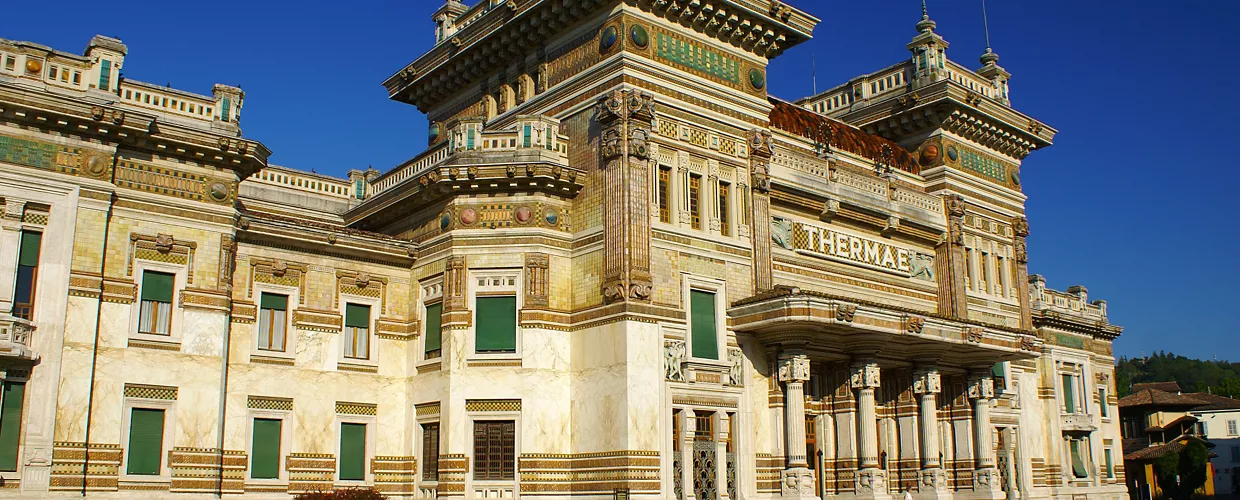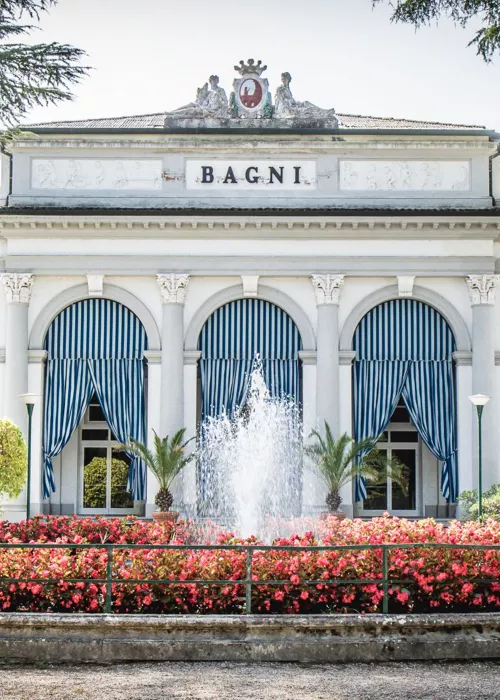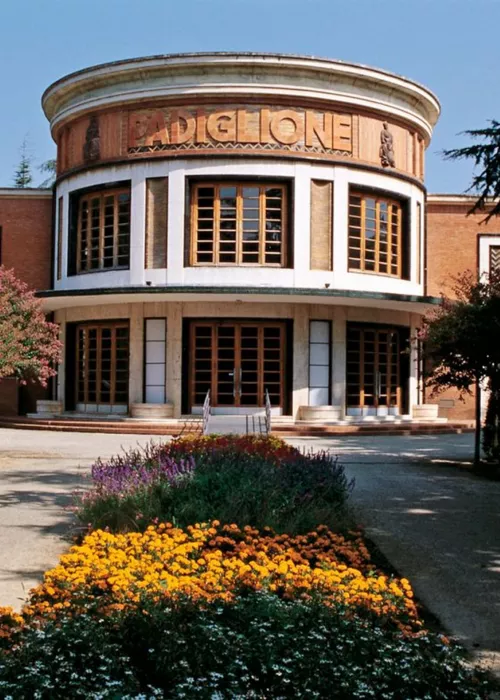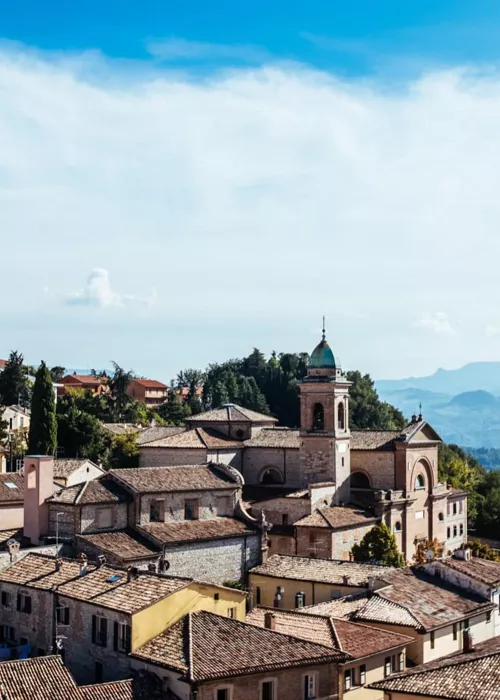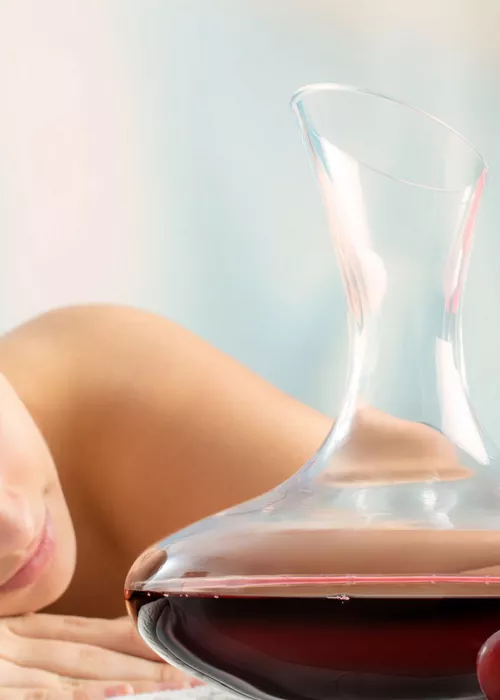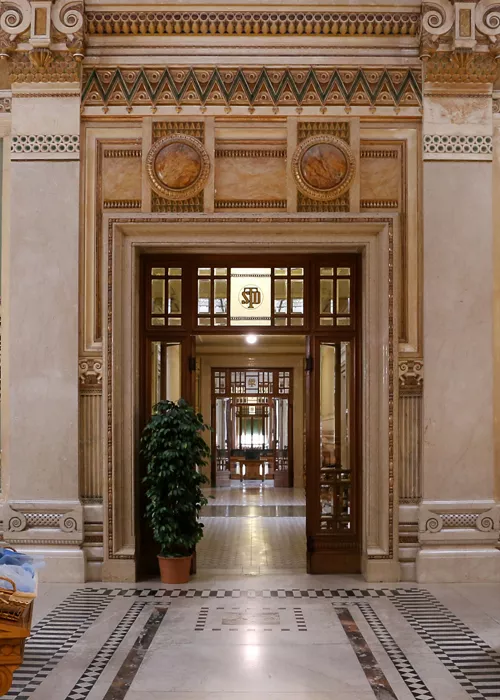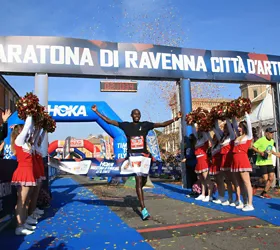A visit to the Salsomaggiore thermal baths will offer you a regenerating experience, enhancing your sense of wellness in a natural setting
At the foot of the Parma Apennine hills in the heart of the Po Valley the Terme di Salsomaggiore present an ideal solution if you feel you need to recover after an intense and stressful period. In this artistic and culturally rich setting one’s spirit and energy will be regenerated in an atmosphere that stimulates a sense of well-being.
Between the provinces of Parma and Piacenza, this thermal spa facility, located in a building featuring the refined Art-Déco architectural style, has acquired a prestigious reputation as one of “the most beautiful spas in Europe”.
Salsomaggiore and the great value of thermal mineral waters
As one of the most important spa centres in Italy Salsomaggiore owes its good fortune to the particular geographical position of the town in which it is situated and the presence of salsobromoiodic waters. Renowned for their many therapeutic properties and for the extraordinary concentration of mineral salts, these waters are used in particular to treat respiratory, rheumatic and gynaecological disorders.
The place-name (originally Salso Maiore; cf. Latin salsus) in fact derives from the kitchen salt that was extracted - already in the Celtic and Roman periods - from the groundwater aquifers of salsobromoiodic water. In ancient times the concentration of salt in this water, five times higher than that of the Mediterranean sea water, made it ideal for the preservation of food.
A ville d'eau well-known and highly appreciated throughout Europe
The recent history of the thermal baths of Salsomaggiore dates back to the year 1839, when Lorenzo Berzieri, a physician who had become a general practitioner in the town, discovered the medicinal efficacy of its waters. Once he had been granted a concession for their use by Marie Louise I of Austria, the reigning Archduchess of Parma, Piacenza and Guastalla, he initiated the activity of the spa, which lived its greatest moment of splendour at the height of the Belle Époque, when the locality became a popular ville d'eau appreciated throughout Europe.
Thermal waters offering health-care and beauty-care remedies
The monumental structure dedicated to Lorenzo Berzieri, which presents a rather glorious expression of the Art-Déco style, was designed by Ugo Giusti and decorated with sculptures and paintings produced by Galileo Chini. The facility includes a wellness centre, offering bathing routes and Kneipp therapy services, body-scrub treatment, chromatic and aromatic thermal baths and oriental, Ayurvedic and hot-stone massages and the balneotherapy and hydrotherapy centre for water rehabilitation exercises, offering balneotherapy, mud-bath cures, inhalation and gingival aerosols.
The more modern Terme Zoja spa resort, nestled in the nearby verdant Mazzini park, has internal sections dedicated to the treatment and prevention of arthro-rheumatic, respiratory, gynaecological and blood-circulation disorders and a hydrotherapy and aesthetic medical treatment unit offering services aimed at enhancing fitness levels and water-based rehabilitation, with vascular hydro-courses and forms of treatment aimed at enhancing facial and corporeal beauty.
Traces of Art Nouveau or the Liberty-style movement
Once you have completed your series of treatment sessions, the Berzieri Wellness Centre, an iconic structure providing a singular testimony of the flourishing Art-Déco period, may also be considered as the point of departure, where you may begin an interesting tour of the town and discover local architectural structures that reflect the Art-Nouveau style.
A magnificent array of designs presenting curved, sinuous and elegant linear elements inspired by and reflecting the conformation of plants and floral species may be found, for example, on the decorative wrought-iron and glass structure covering the Pozzo Scotti artesian well in front of the Terme Bezieri or at the Warowland Gallery, with its various elements reminiscent of the neo-mediaeval style, and at the Palazzo dei Congressi (Conference Centre), the former Grand Hotel des Thermes. Elements of the Liberty-Deco style are visible also on the façade of the former Kursaal Casino and at the railway station, with its decorative arched windows and a wide barrel-vaulted ceiling in the main hall.
Appealing aromas of the natural world
Before you leave Salsomaggiore you should spend a few hours in the relaxing natural setting of the Gavinell Botanical Garden, located only two kilometres outside the town. You will be able to admire a collection of over 450 species of aromatic and medicinal plants in an area of 12 hectares. You might conclude your visit exploring the items displayed in the “sala erboristica” (herbalist section) and in the “olfattoteca” (a section dedicated to aromatic herbal products), where you will discover many fragrances, essences, oils and cosmetic and food products made with the precious Gavinell herbs and ingredients.
Roaming around the salt castles
You might also consider an open-air excursion through the hills surrounding Salsomaggiore, dotted with castles dating back to medieval periods. The fortresses were built by the powerful marquises of Pallavicino. Situated at various strategic points, the old fortified structures had the aim of safeguarding the precious salt-work districts. There are many interesting sites in this area but it is certainly worth visiting the fortresses of Scipione, Tabiano and Contignaco. These were once referred to as the “castelli del sale” (the salt castles). To reach these venues - by bicycle or on foot - you can follow one of the itineraries commonly referred to as the “vie del sale (the salt routes) immersed in the truly verdant Emilian hills.
A sweet souvenir for your return journey
It would also be a good idea to procure an interesting souvenir before you leave and this might be a speciality of the local cuisine or a particular wine from the area. The local folk would probably suggest you purchase a few crisp and chewy “brutti ma buoni” biscuits, made with egg whites and crushed hazelnuts. These so-called “unattractive but good” cookies would also be a delightful accompaniment for the vast range of liqueurs produced in the area, such as Camomillina, Nocino, Bargnolino (also called Prunella) and Limoncino, brewed according to centuries-old recipes and using strictly natural ingredients.



